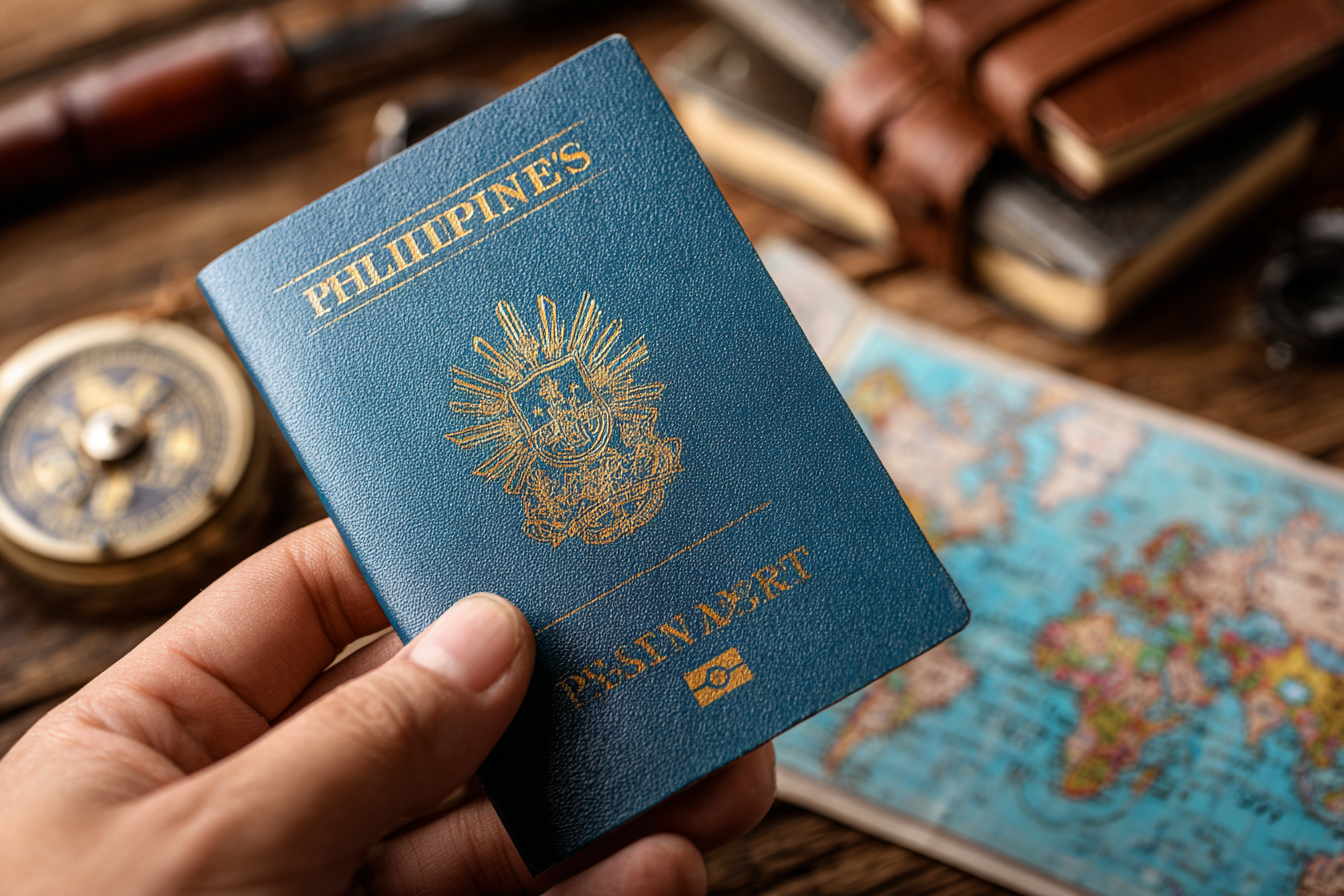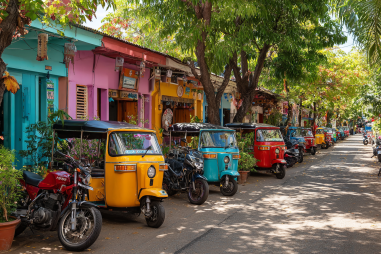Planning a trip to the Philippines can be an exciting adventure, but before you pack your bags, it’s essential to understand the visa requirements to ensure a smooth entry into this beautiful Southeast Asian country. Whether you’re a tourist, a business traveler, or visiting friends and relatives, knowing the types of visas available, the application process, and other key travel regulations will help you navigate the system with ease. In this guide, we’ll walk you through everything you need to know about Philippine travel visa information to make your journey hassle-free.
Visa Requirements Overview
The Philippines has specific entry requirements that vary depending on your nationality and the purpose of your visit. Generally, citizens of many countries can enter the Philippines without a visa for short stays, while others must secure the appropriate visa before arrival. The visa policy aims to balance immigrations control with tourism promotion, so understanding the requirements before traveling is crucial.
In most cases, visitors need a valid passport with at least six months of remaining validity. Additionally, outbound tickets and proof of sufficient funds might be requested at the port of entry. For stays beyond the visa-exempt period or for purposes other than tourism, obtaining a visa beforehand is mandatory.
Types of Philippine Visas for Tourists
The Philippines offers several visa categories suited for different types of travelers. Here are the primary visas applicable to tourists:
- Tourist Visa (9A Visa): This is the most common visa for tourists planning to stay longer than the visa-exemption period, typically granted for up to 59 days initially, with the possibility of extension.
- Visa Waiver Program: Citizens from over 150 countries, including the United States, Canada, and most European nations, can enter the Philippines visa-free for stays up to 30 days.
- No Visa Required (Short Visit): Nationals from ASEAN countries such as Malaysia, Singapore, and Thailand can enter without a visa for up to 30 days.
- Special Tourist Visa (STV): This visa extension allows tourists to stay in the country for 6 months, extendable up to 36 months, introduced to encourage long-term tourism amid the pandemic recovery.
For travelers intending to work, study, or settle in the Philippines, different types of visas such as work permits, student visas, and immigrant visas apply, but these are beyond typical tourist requirements.
Step-by-Step Application Process
Applying for a Philippine visa can be straightforward if you follow the right steps:
- Determine Visa Type: Identify the visa suited for your purpose of visit and nationality.
- Gather Required Documents: Collect all necessary documents such as a valid passport, completed application form, recent photographs, proof of travel itinerary, and financial means.
- Submit Application: You can apply at the nearest Philippine embassy or consulate in your home country. Some locations also accept online applications to expedite processing.
- Pay Visa Fees: Depending on your visa type and duration, fees vary. Payment methods will depend on the embassy but usually include cash, card, or bank transfer.
- Await Processing: Visa processing times generally range from a few days to a couple of weeks.
- Receive Visa: Once approved, your visa will be stamped or affixed to your passport, allowing you to travel to the Philippines.
Important Documents and Fees
To apply for a travel visa to the Philippines, you typically need the following documents:
- A valid passport with at least six months before expiration
- Completed visa application form, usually downloadable from the embassy website
- Recent passport-sized photographs
- Proof of onward or return tickets
- Bank statements or proof of sufficient funds to support your stay
- Accommodation details or invitation letter if staying with relatives or friends
- Visa fee payment receipt
Visa fees vary by nationality and visa type, starting from around $30 USD for a tourist visa, with possible additional charges for processing and expedited service. Checking the latest fee structure with the Philippine embassy or official visa website is recommended before applying.
Visa Exemptions and Duration of Stay
The Philippines grants visa exemptions to citizens of many countries, allowing them to enter and remain legally without a visa for specific short durations, usually 30 days. Visitors from ASEAN countries, the United States, European Union member states, Australia, Canada, and several others benefit from this program.
If you plan to stay beyond the visa-free period, you can apply for an extension at the Bureau of Immigration offices in the Philippines. These extensions can be granted in increments of 29 days up to a maximum allowable period, depending on your nationality and circumstances.
For instance, the Special Tourist Visa (STV) program offers extended stays valid up to six months initially and can be further extended up to 36 months for those seeking long-term visits.
Tips for a Successful Application
To maximize your chances of a smooth and successful visa application, consider the following tips:
- Apply Early: Start the process well in advance to avoid last-minute delays.
- Double-Check Documentation: Ensure all required documents are complete and accurate.
- Provide Clear Itinerary: A detailed travel plan and proof of accommodation demonstrate genuine travel intent.
- Maintain Financial Proof: Show sufficient funds to cover your expenses during your stay.
- Follow Embassy Guidelines: Each Filipino embassy may have specific protocols; check their website and communicate with them if necessary.
- Respect Immigration Rules: Avoid overstaying to prevent penalties or blacklisting for future travels.
Updates on Travel Restrictions
The global situation regarding travel can affect visa policies and entry requirements. The Philippines has adjusted its rules and restrictions periodically, especially throughout the COVID-19 pandemic response. As of now, many restrictions have eased, but travelers should be aware of possible requirements such as:
- Proof of COVID-19 vaccination
- Negative COVID-19 test result prior to arrival
- Mandatory quarantine protocols in certain cases
- Travel insurance requirements
It’s recommended to verify the latest travel advisories from the Philippine Department of Foreign Affairs or Bureau of Immigration websites or with your local Philippine embassy before planning your trip, as rules may change based on health and safety conditions.
Frequently Asked Questions
Do I need a visa to visit the Philippines?
It depends on your nationality and the length of your intended stay. Many countries enjoy visa-free entry for short stays, typically up to 30 days. For longer visits or specific purposes, a visa is required.
How long can I stay in the Philippines on a tourist visa?
The standard tourist visa is initially valid for 59 days, but you can apply for extensions while in the country to stay longer, depending on your nationality and visa category.
Can I apply for a Philippine visa online?
Some embassies and consulates offer online application options or appointment bookings. However, applicants usually need to submit passports and documents in person or via consular services, so check with your local Philippine mission.
What should I do if I want to stay longer than the visa-free period?
You should apply for a visa extension at the Bureau of Immigration in the Philippines before your current authorized stay expires to avoid penalties.
Are there any travel restrictions due to COVID-19?
Travel restrictions have eased but some requirements like proof of vaccination or testing might still apply. Always check the latest government announcements before traveling.
Embarking on a journey to the Philippines opens doors to stunning beaches, vibrant culture, and warm hospitality. By understanding the travel visa information laid out here, you can better prepare, avoid complications, and fully enjoy your Philippine adventure with peace of mind. Start your preparations today and get ready for an unforgettable experience under the tropical sun.







